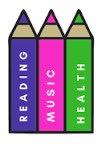Promoting Health Literacy for Pediatric Patients in the Time of COVID-19

Posted on August 7, 2020:
Health and safety protocols have changed the patient experience in the time of COVID-19. This is necessary, of course, to protect clinicians, staff, and patients from potential exposure. But gone are the warm fuzzies of the visit, even in many pediatric settings.
Shorter visits and limited facetime can have more lasting effects on patient and parent education. For many parents, a child’s regular dental or doctor visit is a chance to ask questions and learn more about what is developmentally normal and appropriate. During this stage of the pandemic, it’s important to make sure that health literacy continues despite stricter protocols.
Extend patient care, promote health literacy
One way to promote health literacy during this time is by extending the patient encounter in safe ways. Creative health education materials written in kid-friendly, kid-centric language can provide age-appropriate wellness education for pediatric patients. Simple, powerful messages delivered through stories and characters can make a lasting impression on both patients and their parents.
Our customized materials are created for pediatric clinical use by a physician assistant with over 30 years of experience in the clinical setting. These materials can help providers and clinicians teach vocabulary and concepts about dental health, pediatric development, burn prevention and safety and much more through storybooks, posters, word searches, and other activities.
Published in May, our newest title is Grace Fights COVID-19, which can help children ages 3-6 understand the unfolding public health situation and how they can promote health and safety.
The psychological power of stories
Adults and children alike are drawn to stories in any setting. In fact, according to psychology research, we think in stories and use them to make meaning out of life’s many complexities. Whether told in person, through activity books or via multimedia, stories help to educate, connect, and inspire us. They can also be a natural tool for ensuring that information is presented in age- and education-level appropriate ways.
Stimulate patient interest
Materials that tell stories, educate, and promote health literacy can stimulate patient interest levels. They can also help give children easy-to-understand reasons why taking control of their health is so important. Knowledge is power, after all. Grasping why brushing your teeth twice a day is necessary—in kid-centric language with kid-friendly vocabulary—can help children connect the dots between what they’re asked to do and how they are taking care of their bodies.
Lifelong health literacy
Health literacy (as defined by the US Department of Health and Human Services) is ultimately about individuals’ ability to understand basic health information to make appropriate decisions about their health. For adults, adequate health literacy may include the ability to read and understand prescription labels, follow-up care, and how to make health appointments. Good health literacy increases a person’s ability to care for their family’s health too. And, research from Harvard University’s Center for the Developing Child has shown that early health experiences create a foundation for lifelong health—which is why early health literacy is so critical.
Looking for creative ways to engage patients and extend the patient encounter, especially with today’s health protocols? We can help. Reach out to discuss our customized materials and how to incorporate them into your practice.
Original Post:https://centerforfunctionallearning.com/promoting-health-literacy-for-pediatric-patients-in-the-time-of-covid-19/
Contact Us
Contact Us Today!
Are you a clinician caring for pediatric patients, an early childhood teacher, or a music educator? Reach out to discuss how we can help!
